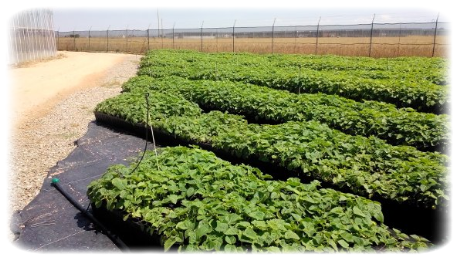Paulownia - SerraSol Santa Lucia Società Agricola srl
Main menu:
The Paulownia
The original name of the genre is Pavlovnia, but later became Paulownia. It is called so the name of Queen Anna Pavlovna, daughter of Tsar Paul I of Russia. For the same reason the tree is also known as "princess tree". China call paulownia "Dragon Tree", and Japan - "kiri".
It is difficult to list all the areas in which you use different parts of it, without omitting anything. Wood, leaves, flowers - all have properties of which we can take advantage. The whole plant - with its extremely rapid growth, it is a small treasure for environmentalists. They found that paulownia, with its rapidly developing root system, is only suitable for reforestation of land threatened by erosion. This has for years been a routine practice in some countries where erosion is a constant problem. Paulownia is also suitable for reforestation of wooded areas affected by fires; in addition to the obvious benefits, through serious amount of leaf mass, after the fall of the leaves, it ensures fast natural fertilization of the affected areas, allowing the phytoextraction of heavy metals from the soil. L 'ricosciuto industry has long been the benefits of Paulownia wood. Paulownia plants are very important to the 'ecology and also for the special quality of the wood. For every hectare of plantation they absorb CO2 32,5t 59T releasing oxygen, these trees by the fine wood are referred to as the green lung of the city.The light down present in the leaves it keeps micro-powders. Paulownia plants are a big "Sympathy" even in 'beekeeping, the scent of flowers draws draws a fragrance of vanilla and almonds, due to its honey produced in hives situated in the woods of paulownia, recalls acacia honey color clear and aromatic taste. foliage of plants Paulownia is ideal for the production of feed for herbivores, it contains about 20% protein, the quality is similar to 'alfalfa. The fine wood of Pualownia is indicated for creating frames, musical instruments, boats, furniture, surfboards, plywood, it is nicknamed "aluminum timber" for its lightness and strength. The plantation Paulownia short rotation has the purpose of producing wood biomass, pellets, tablets compressed wood, wood to burn. The plantation should produce from 6 te 14 t dry mass per hectare / year.
The original name of the genre is Pavlovnia, but later became Paulownia. It is called so the name of Queen Anna Pavlovna, daughter of Tsar Paul I of Russia. For the same reason the tree is also known as "princess tree". China call paulownia "Dragon Tree", and Japan - "kiri".
It is difficult to list all the areas in which you use different parts of it, without omitting anything. Wood, leaves, flowers - all have properties of which we can take advantage. The whole plant - with its extremely rapid growth, it is a small treasure for environmentalists. They found that paulownia, with its rapidly developing root system, is only suitable for reforestation of land threatened by erosion. This has for years been a routine practice in some countries where erosion is a constant problem. Paulownia is also suitable for reforestation of wooded areas affected by fires; in addition to the obvious benefits, through serious amount of leaf mass, after the fall of the leaves, it ensures fast natural fertilization of the affected areas, allowing the phytoextraction of heavy metals from the soil. L 'ricosciuto industry has long been the benefits of Paulownia wood. Paulownia plants are very important to the 'ecology and also for the special quality of the wood. For every hectare of plantation they absorb CO2 32,5t 59T releasing oxygen, these trees by the fine wood are referred to as the green lung of the city.The light down present in the leaves it keeps micro-powders. Paulownia plants are a big "Sympathy" even in 'beekeeping, the scent of flowers draws draws a fragrance of vanilla and almonds, due to its honey produced in hives situated in the woods of paulownia, recalls acacia honey color clear and aromatic taste. foliage of plants Paulownia is ideal for the production of feed for herbivores, it contains about 20% protein, the quality is similar to 'alfalfa. The fine wood of Pualownia is indicated for creating frames, musical instruments, boats, furniture, surfboards, plywood, it is nicknamed "aluminum timber" for its lightness and strength. The plantation Paulownia short rotation has the purpose of producing wood biomass, pellets, tablets compressed wood, wood to burn. The plantation should produce from 6 te 14 t dry mass per hectare / year.
Available: plateaux Forestry 40 cells, vessel diameter 18

Home Page | Aloe Vera | Aloe Arborescens | Capers | Paulownia | Price List | Street Map | Contacts | General Site Map